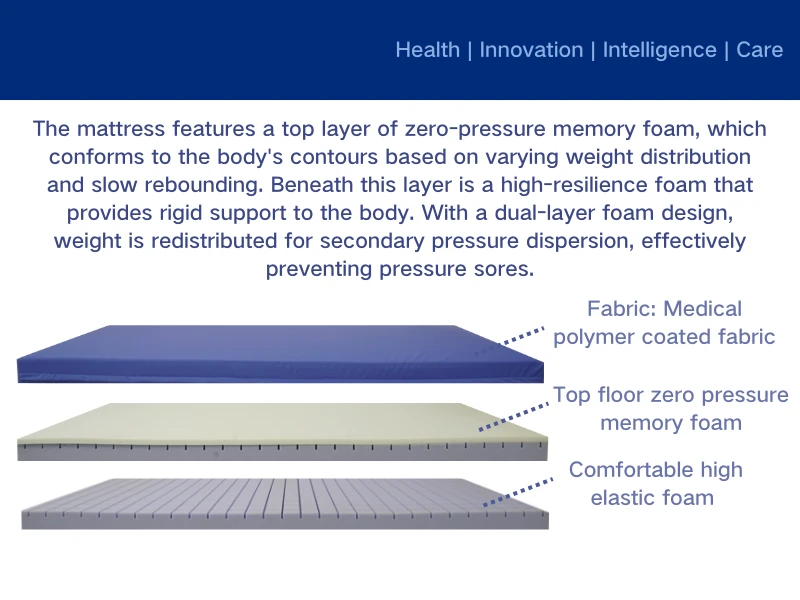pressure injury care exporter
Understanding Pressure Injury Care A Guide for Healthcare Exporters
Pressure injuries, also known as pressure ulcers or bedsores, are localized injuries to the skin and underlying tissue, typically over bony prominences, resulting from prolonged pressure or friction. They pose significant challenges for healthcare providers, both in terms of patient comfort and economic burden. With the global increase in the aging population and the prevalence of conditions that limit mobility, such as stroke, spinal cord injuries, and chronic illnesses, the demand for effective pressure injury care products and services is rising. This article explores the importance of pressure injury care, innovations in the field, and the implications for healthcare exporters.
The Importance of Pressure Injury Care
Pressure injuries represent a major concern within healthcare systems worldwide. According to studies, the incidence of pressure injuries can be as high as 30% in patients who are hospitalized, particularly among those in intensive care units. These injuries can lead to severe pain, increased length of hospital stays, and significantly enhance healthcare costs. In severe cases, they may even lead to life-threatening infections or systemic complications.
Proper pressure injury management involves assessment, prevention, and treatment. Preventative measures include regular repositioning of patients, using pressure-relieving devices (like specialized mattresses), and maintaining skin hygiene. For existing injuries, treatment may involve wound care, nutrition management, and in some cases, surgical intervention. Global awareness around pressure injury prevention has vastly improved, leading to the development of comprehensive care protocols and patient safety initiatives.
Innovations in Pressure Injury Care
Recent advancements in technology and materials science have led to innovative products that improve the prevention and treatment of pressure injuries. For instance, the development of advanced wound dressings, such as hydrocolloids, foams, and alginates, contributes to enhanced healing environments. These dressings provide moisture retention while allowing for gas exchange, which is critical in promoting skin regeneration and protecting against infection.
Additionally, smart technology is making inroads into pressure injury care. Smart beds equipped with sensors can monitor patient movements and adjust pressure levels automatically to reduce the risk of ulcers. Mobile health applications can help caregivers track patient data, including positioning schedules and wound assessments, making it easier to follow prevention guidelines and improve outcomes.
Implications for Healthcare Exporters
pressure injury care exporter

As global health systems increasingly focus on quality of care, healthcare exporters have a unique opportunity to provide innovative solutions in pressure injury care. Exporters can play a crucial role by introducing new technologies, wound care products, and preventative devices to international markets that are paired with robust educational programs for healthcare professionals.
When exporting pressure injury care products, it is essential for businesses to consider various factors
1. Regulatory Compliance Different countries abide by specific regulations regarding medical devices. Ensuring compliance with local health regulations and acquiring necessary certifications is crucial.
2. Cultural Competence Understanding cultural differences in healthcare practices can aid exporters in tailoring their products and marketing strategies. This cultural insight can lead to better acceptance of new technologies and innovations within different healthcare systems.
3. Training and Support Providing comprehensive training and ongoing support for healthcare professionals using these products is vital. This ensures that the products are used effectively and can significantly improve patient outcomes.
4. Collaborations with Local Entities Partnering with local healthcare organizations and distributors can enhance market entry strategies. Collaborations can facilitate a better understanding of local needs and contexts, leading to more effective product delivery.
Conclusion
As the challenges posed by pressure injuries continue to grow, the demand for innovative and effective care solutions becomes imperative. For healthcare exporters, tapping into this market presents vast opportunities to improve patient care on a global scale. By focusing on innovative technologies, adhering to regulatory standards, and providing ongoing education and support, exporters can make a meaningful impact in the field of pressure injury care while ensuring the betterment of healthcare worldwide. The journey towards effective pressure injury management is a collaborative effort, and with concerted action, we can significantly enhance the quality of life for those at risk.
-
the-truth-about-orthopedic-mattresses-for-sore-back-painNewsAug.23,2025
-
space-saving-benefits-of-a-single-mattress-cubeNewsAug.23,2025
-
eco-friendly-advantages-of-a-silicon-mattressNewsAug.23,2025
-
how-to-fix-sagging-in-a-special-mattressNewsAug.23,2025
-
how-ambulance-stretcher-mattresses-reduce-pressure-injuriesNewsAug.23,2025
-
best-cleaning-practices-for-a-hospital-mattress-doubleNewsAug.22,2025
-
Mattresses Designed for Back Pain ReliefNewsAug.08,2025

